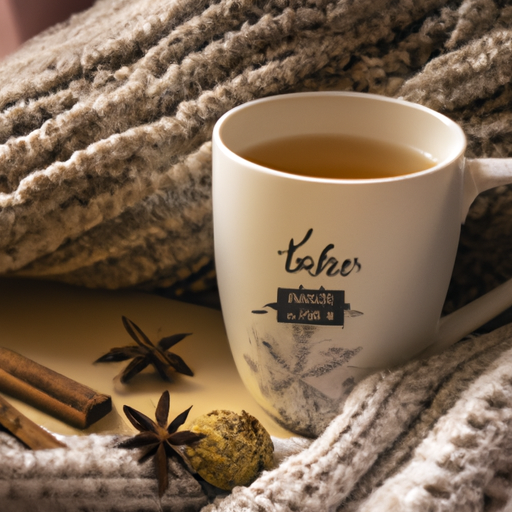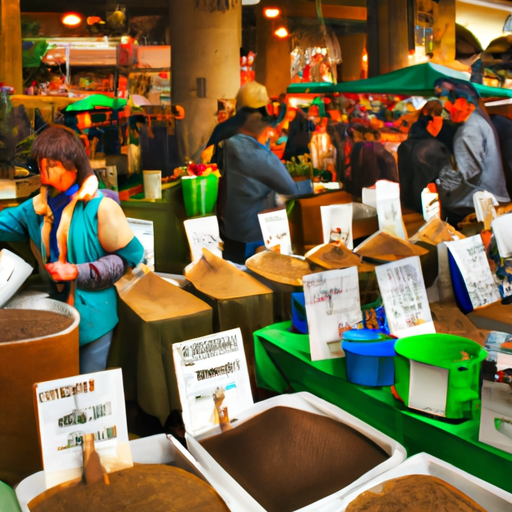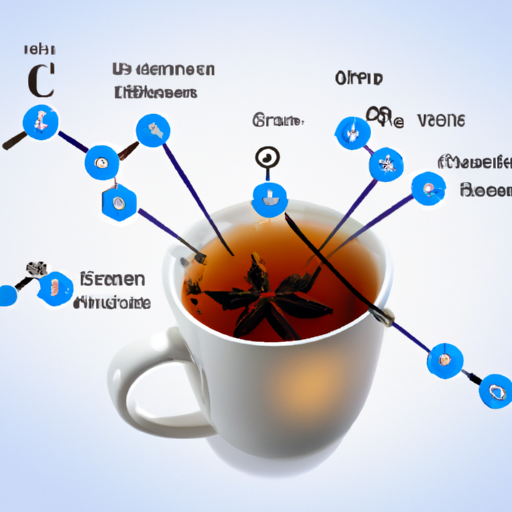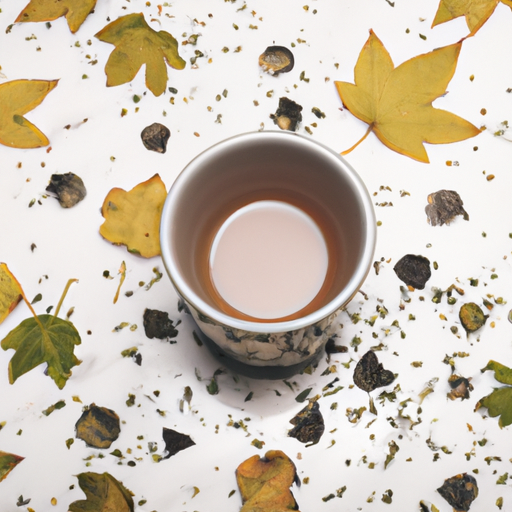I truly enjoy indulging in a delightful cup of chai tea, particularly when the weather is cold. However, there are moments when my taste buds yearn for a flavor that’s both sweeter and creamier than the usual spiced chai. This is exactly why I created my own version of vanilla chai tea!
With just a few simple ingredients and some easy steps, you can make your own deliciously cozy cup of vanilla chai at home. To start, gather your ingredients: black tea bags, whole spices like cinnamon and cardamom, vanilla extract, milk (dairy or non-dairy), and sweetener of choice like honey or sugar.
Once you have everything ready to go, it’s time to brew the tea. From there, you’ll add in your prepared spices to infuse the flavor into the hot liquid before stirring in milk and sweetening to taste. And voila! You’ll have a warm mug of homemade vanilla chai that’s sure to satisfy any craving.
Key Takeaways
- Vanilla chai tea can be made at home using black/green/rooibos tea, cinnamon, cardamom, vanilla extract, milk, and sweetener.
- The tea has several health benefits such as providing antioxidants, aiding digestion, providing calcium, and having a calming effect.
- The brewing technique involves using a tea strainer, letting water cool before pouring, and steeping for at least 5 minutes.
- The recipe can be customized with different spices, sweeteners, and types of milk, and can be paired with desserts or snacks for flavor combinations. Leftover tea can be stored in the fridge for up to 3 days, or frozen in ice cube trays for up to 3 months.
Gather Your Ingredients
Before you can begin crafting your perfect cup of vanilla chai, it’s imperative to gather all the necessary ingredients. The main components of this tea are black tea, spices such as cinnamon and cardamom, milk, sweetener like honey or sugar, and vanilla extract. You can always make ingredient substitutions based on your preference or availability. For instance, if you don’t have black tea leaves at hand, you can replace them with green tea or rooibos.
Apart from its delicious taste, vanilla chai offers several health benefits. Black tea is a rich source of antioxidants that help prevent cell damage caused by free radicals in the body. Cinnamon has anti-inflammatory properties that may reduce inflammation and lower the risk of heart diseases. Cardamom has been used for centuries to aid digestion and freshen breath. Milk provides calcium for strong bones and teeth while honey is a natural sweetener that also has antibacterial qualities.
Now that we’ve gathered our ingredients and gotten familiar with their benefits, let’s move on to brewing the tea.
Brew the Tea
Now, you’ll want to grab your favorite tea strainer and sprinkle in loose leaf black tea leaves until it’s about three-quarters full. Black tea is the most common type of tea used for chai because it has a strong flavor that can withstand the addition of spices. However, if you prefer green or white tea, feel free to experiment with those as well.
Next, heat up water in a pot until it reaches boiling point. Once it’s boiled, let it cool for about 30 seconds before pouring it over the tea leaves. This step is crucial because pouring boiling water directly onto the leaves will burn them and make your tea taste bitter. Let the mixture steep for at least five minutes to allow all the flavors to infuse into the water.
Tea brewing techniques vary depending on personal preference and cultural traditions. Some people like their chai stronger, while others prefer a milder version. Experiment with different types of tea leaves and brewing times until you find your perfect cup of chai.
Now that we’ve brewed our base tea, let’s move on to preparing the spices.
Prepare the Spices
So I’m getting ready to make my vanilla chai tea, and the next step is preparing the spices. To really get that full flavor, it’s important to grind fresh spices instead of using pre-ground ones.
Once you’ve got your spices ground up, you’ll want to mix them in with your tea for a perfect blend of flavors.
Grind Fresh Spices
First things first, you gotta get grindin’ those fresh spices to really spice up your vanilla chai tea. There are various spice grinder options available in the market that can help you achieve the perfect consistency for your spices. Personally, I prefer using a manual spice grinder as it allows me to control the coarseness of the grind and ensures that all my spices are evenly ground.
Once you have selected your preferred spice grinder, it’s time to start grinding! Before adding the spices to the grinder, make sure to remove any stems or impurities from them. Once cleaned, add them into the grinder and pulse until they reach your desired consistency. In addition to grinding, there are also various spice infusion techniques that can be used such as steeping them in hot water or milk before adding them to your tea. These techniques not only enhance the flavor profile but also ensure that all of their beneficial compounds are extracted and added into your cup of tea. Now that we have our freshly ground spices ready, let’s move on to mixing with tea.
Mix with Tea
To elevate your tea-drinking experience, you should consider mixing the freshly ground spices with a high-quality loose leaf black tea and steeping them together in hot water.
While chai tea is traditionally made with black tea, you can experiment with different types of teas like green or rooibos for unique flavor profiles. These tea alternatives also offer additional health benefits such as antioxidants and lower caffeine content.
When mixing the spices with the tea, it’s important to use the right amount of each ingredient to achieve a balanced flavor. A basic recipe calls for 1 teaspoon of freshly grated ginger, 1 cinnamon stick, 4-5 cardamom pods, 4-5 whole cloves, and a pinch of nutmeg per cup of water.
Adjust these measurements to your personal taste preference or try adding other spices like fennel seeds or star anise. Once everything is mixed together and steeped in hot water for about 5 minutes, strain the liquid into a cup and enjoy as is or move on to add milk for an extra creamy touch.
Add Milk
Once the tea has steeped for 5 minutes, stir in a splash of creamy milk to create a rich, comforting beverage. I prefer using almond milk because it’s lower in calories and has a slightly nutty flavor that pairs well with the spices in the chai blend. However, you can use any milk substitute you like such as soy, oat, or coconut milk.
If you want to make your vanilla chai tea extra luxurious, try adding frothed milk on top. To do this, heat up your desired amount of milk on the stove or in the microwave until it’s warm but not boiling. Then use a frother (or whisk vigorously by hand) to create a thick layer of foam on top of your tea.
Don’t have any milk substitutes on hand? No problem! You can still enjoy a delicious cup of vanilla chai by simply omitting this step altogether. The spices and natural sweetness from the honey will still shine through and provide plenty of flavor.
Now that we’ve added some creamy goodness to our tea, let’s move onto sweetening it to taste.
Sweeten to Taste
Now that I’ve added milk to my vanilla chai tea, it’s time to sweeten it up. The key here is to choose your preferred sweetener, whether it’s honey, sugar, or stevia.
Once you’ve sorted that out, adding a splash of vanilla extract will give your tea an extra depth of flavor.
Choose Your Sweetener
If you’re worried about adding too much sugar to your tea, don’t be afraid to try natural sweeteners like honey or maple syrup instead of processed white sugar. Not only do they add a different flavor profile, but they also have health benefits that white sugar lacks. Honey is known for its antibacterial properties and can soothe a sore throat, while maple syrup contains antioxidants and minerals such as zinc and manganese.
To help you decide which sweetener to use in your vanilla chai tea, here’s a table comparing natural and artificial sweeteners:
| Sweetener | Type | Flavor Profile | Health Benefits |
|---|---|---|---|
| Honey | Natural | Floral, Sweet | Antibacterial, Soothes Sore Throat |
| Maple Syrup | Natural | Nutty, Sweet | Antioxidants, Minerals (Zinc & Manganese) |
| Stevia | Artificial | No Flavor | Low Calorie Alternative |
| Splenda | Artificial | No Flavor | Low Calorie Alternative |
With this information at hand, you can choose the best sweetener that suits your taste buds and dietary needs. Now that we’ve talked about choosing the right sweetener for your vanilla chai tea let’s move on to adding vanilla extract.
Add Vanilla Extract
Adding a splash of vanilla extract brings a warm and comforting aroma to your cup, inviting you to take a sip and savor the flavors. Vanilla extract isn’t only an aromatic addition but also offers several health benefits. It contains antioxidants that help fight inflammation and boost immunity. Moreover, it’s known for its calming effect on the mind, which can provide relief from anxiety and stress.
Apart from its use in baking, there are many best ways to use vanilla extract in other recipes too. You can add it to smoothies or oatmeal for an extra flavor kick or mix it with yogurt for a delicious dip or topping. Vanilla extract pairs well with fruits like bananas, strawberries, and blueberries as well as chocolate-based desserts like brownies and cakes. With so many uses, keeping vanilla extract handy in your pantry is always beneficial.
Now that we’ve added some vanilla extract, let’s move on to the next step of straining and serving our perfectly brewed chai tea!
Strain and Serve
Once the chai tea has steeped for 5 minutes, use a strainer to pour it into your favorite mug and enjoy its warm and comforting flavors. Straining is an important step as it removes any loose tea leaves or spices that may have settled at the bottom of the pot. This ensures a smooth and enjoyable drinking experience without any unwanted bits.
To make your vanilla chai tea even more visually appealing, consider adding some garnishes such as cinnamon sticks or whipped cream on top. These simple additions can elevate the look of your drink and make it feel more special. Additionally, serving temperature plays a crucial role in enhancing the flavor of your tea. If you prefer hot drinks, serve your chai tea immediately after straining while it’s still warm. Alternatively, if you prefer cold drinks, let your strained tea cool completely before pouring over ice.
Pairing your vanilla chai tea with desserts or snacks is also a fun way to experiment with new flavor combinations. For example, try pairing with scones or shortbread cookies for a classic English afternoon tea experience. Or if you’re feeling adventurous, pair with spicy Indian snacks like samosas or pakoras to complement the bold flavors in your chai tea. With these tips for straining, presentation, serving temperature and pairing options in mind, sit back and relax while savoring every sip of your homemade vanilla chai tea.
Now that you know how to properly strain and serve your homemade vanilla chai tea plus tips for presentation and serving temperature alongside creative ideas for pairing with desserts or snacks, let’s move on to customizing our recipe by experimenting with different ingredients!
Customize Your Recipe
Get creative and switch up the flavors in your homemade chai by experimenting with different spices and sweeteners. Don’t be afraid to try new things and find what works best for you. For example, adding a dash of nutmeg or cardamom can give your vanilla chai an extra kick of flavor.
Adjust brewing time to suit your taste preferences. If you prefer a stronger tea, let it steep for a few extra minutes. If you like a milder flavor, reduce the brewing time. Experimenting with different brewing times can help you find the perfect balance of flavor and strength.
Another way to customize your recipe is by choosing different types of milk or alternative milks such as almond or soy milk. This can add another layer of flavor to your vanilla chai tea and make it even more delicious.
Now that we’ve talked about customizing your recipe, let’s move on to pairing it with a snack to complete the ultimate tea-time experience!
Pair with a Snack
Now that we’ve talked about how to customize your vanilla chai tea recipe, let’s talk about the perfect snack pairings to go with it. After all, a warm cup of chai can be even more satisfying when enjoyed alongside the right treat.
When choosing a snack to pair with your chai, you’ll want to consider flavor combinations. Think about flavors that will complement the spices in your tea, such as cinnamon, ginger, and cardamom. You might also consider textures – for example, something crunchy to contrast with the smoothness of your tea.
To help you get started on pairing snacks with your vanilla chai tea, here’s a table outlining some delicious options:
| Snack | Flavor Profile | Texture |
|---|---|---|
| Ginger cookies | Spicy and sweet | Crunchy |
| Almond biscotti | Nutty and slightly sweet | Crunchy |
| Apple slices | Tart and crisp | Crisp |
| Banana bread | Sweet and spiced | Moist |
With these ideas in mind, experiment with different snack pairings until you find your favorite combination. And remember – there’s no wrong way to enjoy your chai!
As much as we’d love to enjoy our vanilla chai tea and snacks indefinitely, sometimes we have leftovers. In the next section, I’ll share tips for storing any extra tea you may have made during this process.
Store Leftovers
Ah, the inevitable aftermath of a satisfying cup of spiced goodness – what to do with the remaining liquid gold? As someone who loves their vanilla chai tea, I’ve explored various storing options over time.
The good news is that you have several choices when it comes to preserving your leftover tea. Firstly, you can store it in an airtight container and refrigerate it for up to three days. Make sure you let it cool down before placing it in the fridge. This method will help maintain its flavor and freshness for a couple more days.
Alternatively, if you want your tea to last longer, try freezing it in ice cube trays. Once frozen, pop them out and store them in a freezer-safe bag for up to three months. Remember that the shelf life of your vanilla chai tea depends on how long you brewed it for initially.
If you steeped it for too long or added any other ingredients like milk or honey, its shelf life may be shorter than expected. So always make sure to taste-test before storing leftovers!
With these tips in mind, you’ll never have to waste any leftover chai again. Now that we know how to store our delicious brews properly, let’s talk about sharing this amazing drink with friends!
Share with Friends
To share the deliciousness of your leftover brew with friends, all you need to do is refrigerate it in an airtight container and offer them a cup next time they come over. It’s a great way to introduce vanilla chai tea to others who may not have tried it before.
Whether you’re having a movie night or hosting a tea party, sharing your favorite drink with friends can be a fun and enjoyable experience. When reheating the leftover tea, be sure to do so slowly on low heat. This will prevent the spices from becoming overpowering and ensure that the flavors are balanced. You can also add a splash of milk or cream for an extra creamy texture.
Your guests will appreciate the effort you put into making sure their cup is just as delicious as yours. Don’t forget to garnish each cup with a cinnamon stick or sprinkle of nutmeg for added presentation value. A little attention to detail goes a long way when it comes to entertaining guests.
By offering them your homemade vanilla chai tea, you’re showing them that you care about their taste buds and want them to enjoy every sip. So go ahead, invite some friends over and share your love for this tasty beverage!
Frequently Asked Questions
Where can I buy chai tea leaves or tea bags?
Funny you should ask, I was just at the store picking up some tea leaves for myself.
When it comes to chai tea, there are a few different types of tea leaves you can use such as black tea, green tea, or even a rooibos blend.
As for where to buy them, most grocery stores carry a variety of tea bags or loose leaf options in their tea aisle.
If you’re looking for something more specialized or unique, there are also online retailers that offer a wider selection of chai blends and brewing methods.
Whether you prefer to steep your chai in hot water on the stove or use an infuser ball with loose leaf tea, experimenting with different types and brewing techniques is all part of the fun!
Can I substitute almond or soy milk for regular milk in this recipe?
When substituting milk with almond or soy milk in a recipe, there are both pros and cons to consider. On the one hand, using non-dairy alternatives can be a great option for those who are lactose intolerant or have other dietary restrictions.
Almond milk is low in calories and naturally rich in vitamin E, while soy milk contains more protein than dairy milk. However, it’s important to note that these substitutes may alter the taste and texture of your final product. Additionally, there are nutritional differences between dairy and non-dairy milks that should be taken into account when making substitutions.
Overall, whether or not you choose to substitute regular milk with almond or soy milk ultimately depends on your personal preferences and dietary needs.
How long can I keep leftover chai tea in the fridge?
Leftover chai tea can be stored in the fridge for up to five days, but it’s important to take measures to prevent spoilage. To maintain its refreshing flavor, store the tea in an airtight container and avoid leaving it at room temperature for too long.
When reusing leftovers, consider adding fresh ingredients like ginger or cinnamon to enhance the taste. When reheating, using a stovetop is preferable over a microwave as it allows for more control and prevents overcooking or burning. To maintain consistency and flavor, heat the chai tea slowly on low heat while stirring occasionally.
With these tips, you can enjoy your leftover chai tea without compromising its quality!
Are there any health benefits to drinking chai tea?
When it comes to the health benefits of chai tea, there are plenty to consider. Chai tea is well-known for its ability to aid in digestive health, thanks to the combination of spices like ginger and cinnamon. These ingredients have anti-inflammatory properties that can help soothe an upset stomach or ease indigestion.
Additionally, chai tea contains antioxidants that can help protect your body from damage caused by free radicals. Some studies have even suggested that drinking chai tea regularly may improve heart health and reduce the risk of certain diseases.
So if you’re looking for a tasty way to boost your overall health, incorporating chai tea into your routine could be a great choice!
Can I add alcohol to my chai tea for a boozy twist?
Looking to add a boozy twist to your chai tea? Absolutely! Chai tea cocktails are a wonderful way to enjoy the flavors of chai while also indulging in some delicious spirits.
The best alcohol pairings for chai include rum, whiskey, and brandy. Each of these choices complements the warm spices found in chai perfectly and adds a depth of flavor that is truly delightful. But, I’d caution you to not overdo it with the alcohol – balance is key when creating any cocktail.
A little bit can go a long way and you don’t want to overpower the subtle notes of vanilla and other spices found in your chai. Trust me, once you find the perfect ratio for your cocktail, you’ll be sipping on this tasty treat all year round!
Conclusion
Well, that’s it! You now know how to make a delicious vanilla chai tea. This recipe is perfect for those who love the warm and cozy feeling of a hot beverage on a chilly day.
Remember that you can always customize your recipe to fit your taste preferences by adjusting the amount of spices or sweetener you use. As they say, "a cup of tea a day keeps the worries away."So why not treat yourself and enjoy this comforting drink while taking a break from your busy day?
Don’t forget to pair it with your favorite snack and share it with friends for an even more enjoyable experience. Cheers to good company and great tea!










